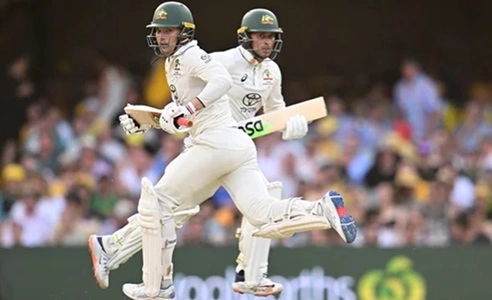Sure, cricket is one of the few sports that have evolved quite a lot in terms of rules and the nature of the game; no one can deny that. Though, as always, the numbers and stats in cricket will always be important because they tell you the real story, you know? And just like that, one of the most important numbers in cricket is the average like, it could be a batting average or a bowling average. Though, most of the time, when people talk about average in cricket, they only are considering the batting average. Today, we’re here to talk about both types, how average is calculated in cricket, and an easy method to calculate it. So, let’s just get to it right away.
Batting Average

Let’s keep things simple here, you see, if we go with the simplest explanation of batting average in cricket, it would look like this: A batting average shows how many runs a batter scores on average before getting out. Plain and simple!
And batting average or bowling average isn’t something that you can calculate on a per-match basis, it is calculated for all the matches that a player has played in that particular format of the game. Like, just take the total runs a player has scored and simply just divide it by how many times they’ve been dismissed (aka got out).
For example:
If a batter has scored 1,000 runs and has been out 25 times, their batting average is 1,000 ÷ 25 = 40.
So, dismissals have a big part to do in it, right? Then what about the innings where the batsmen stay “not out”? Well, in such cases, you see, as per the rule books, the innings and runs still count, but the dismissals don’t. So, not-outs can make the average go higher, even if the player didn’t score big runs in those innings.
Bowling Average
See, bowling average works a little differently than the batting average. And how’s that? Well, in this case, you see, bowling average is there to tell us how many runs a bowler gives away for each wicket they take.
Here’s how it works:
Total runs conceded ÷ Total wickets taken = Bowling average
Example:
If a bowler gives 300 runs and takes 15 wickets, their average is 300 ÷ 15 = 20.
So, if the bowling average is lower, then it is considered a good performance, but this isn’t the only factor that decides a bowler’s performance; there are other metrics, too. But still, yes, a bowler who gives away fewer runs and takes more wickets is always valuable.
Why Do These Averages Even Matter?
Well, just tell us, without these average numbers right in front of you, how would the audience know how well a particular player has done or performed in the past? In our opinion, these average numbers are more like the track records for the players, you know like, a higher batting average means a player can score runs too often without getting out, and that’s just a big plus for any team right there.
Just like that, a low bowling average means the bowler isn’t giving away too many runs but still getting wickets for the team, and that’s a good thing. In today’s modern day cricket, these numbers play a big role in deciding which player to select and which to avoid in order to make a team strong.
What’s Considered a “Good” Average Anyway?
Sure, we talked about how you can calculate bowling or batting averages in cricket, but what exactly is considered a good, decent, or super-good average?
So, here’s the thing:
- You see, in Test matches, a batting average of 50+ is just purely fantastic, and a bowling average under 30 is somewhat great.
- In ODIs, a batting average of around 40+ is solid, and a bowling average below 30 is pretty decent once again.
- Average doesn’t matter as much in T20s, though, still, a batting average of 35 or a bowling average under 25 is impressive.
Averages That’ll Blow Your Mind
How about we talk about some of the greatest and most impressive averages in the history of cricket? Well, there have been some players who had too good of averages that just makes your jaw drop.
For example, you must have heard of Sir Donald Bradman, the king of Test cricket, who had a batting average of 99.94. Yes, even in today’s modern-day cricket, where critics say that grounds are shorter, pitches are not as good, we have more equipment, and stuff like that, even then, no one has even come close to that.
On the bowling side, George Lohmann holds the record for the best Test bowling average so far. What was his bowling average? Oh, that was just 10.75 runs per wicket.